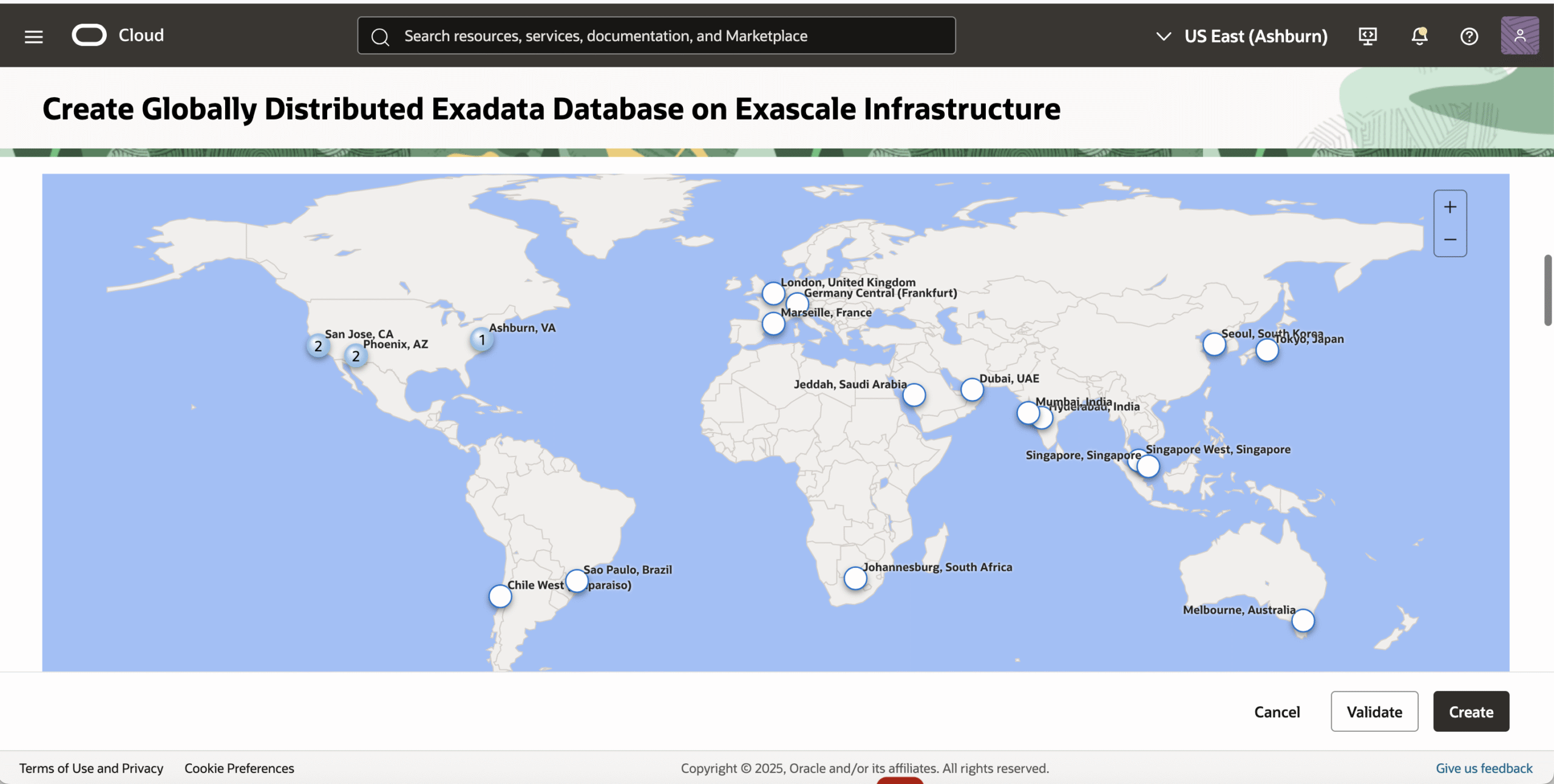
Oracle today revealed it is making available an instance of its namesake distributed relational database on the serverless Exascale Infrastructure platform it developed to enable databases to horizontally scale on demand.
Wei Hu, senior vice president for high availability technologies for Oracle, said the Oracle Globally Distributed Exadata Database on Exascale Infrastructure service will be accessible via Oracle Cloud Infrastructure (OCI) regions worldwide to enable IT teams to centralize the management of highly distributed data sources in ways that meet any local compliance requirements.
That capability will be especially critical for real-time analytics, high-volume transaction processing, and emerging classes of agentic artificial intelligence (AI) workloads that need access to serverless computing infrastructure to scale up and down as needed, he added. That attribute is especially critical in the age of AI, where AI agents will soon be trying to access massive amounts of distributed data that need access to vector processing capabilities in waves that are likely to be difficult to predict, noted Hu.
Additionally, this service automatically distributes, stores, and synchronizes data across multiple locations, enabling applications to remain online even during outages. IT teams will also be able to take advantage of an Active/Active/Active architecture across multiple data centers using Raft replication to support mission-critical applications that always need to be available.
Oracle, with the rise of AI, has been making a stronger case for centralizing the management of data using a relational database platform that is now capable of supporting a wide range of data types. That approach also promises to make it simpler for AI agents to use standard SQL to query that data versus requiring each AI agent to be trained to invoke multiple variants of query languages for each type of database that has been deployed. Oracle has also embraced the Model Context Protocol (MCP) developed by Anthropic to make data more accessible to AI agents.
It’s not clear exactly how the rise of AI will impact the way data is managed, but the level of scale required is about to exponentially increase. A Futurum Group research report predicts the global data Intelligence, analytics, and infrastructure (DIAI) market will grow from $409.3 billion in 2024 to $876.6 billion by 2029, achieving a strong 16.5% compound annual growth rate (CAGR). Demand for high-performance, multi-modal data processing is expected to similarly grow at a 19.1% CAGR, reaching $122.7 billion by 2029.
Regardless of approach, the one certainty is that the pressure to keep data management costs under control in the age of AI will be intense as the volume of data being managed continues to grow. The challenge now is making a data management platform decision today that can meet the needs of these applications for many years to come, especially as the number of AI agents being employed starts to reach into the realms of the hundreds of thousands. After all, each of those AI agents is essentially another end user that simply has a lot more insatiable appetite for accessing data anywhere they can find it.


